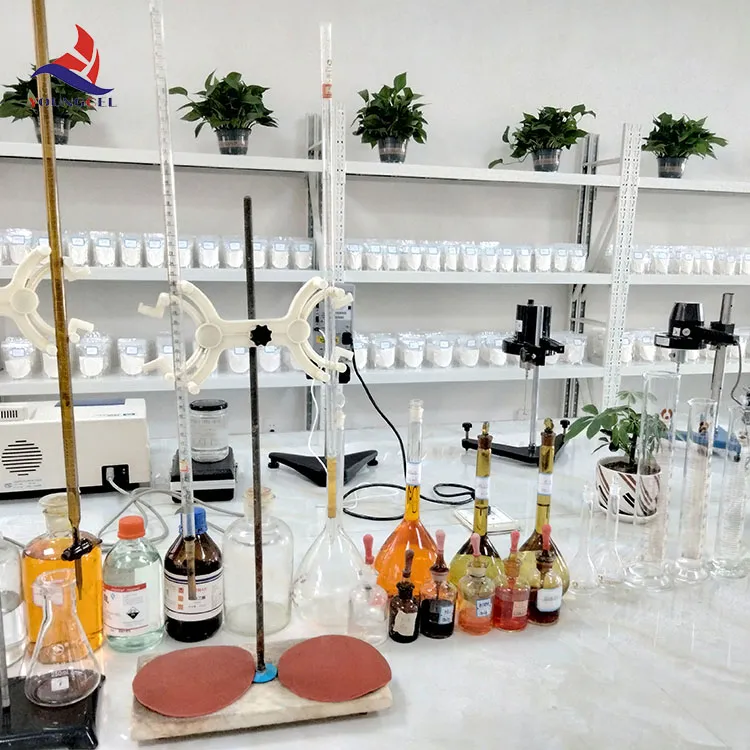The Importance of HPMC in Modern Manufacturing
Hydroxypropyl Methylcellulose (HPMC) is a versatile, non-ionic cellulose ether that has gained significant traction in various industries due to its unique properties. As a key component in manufacturing processes, HPMC plays an essential role in enhancing product performance, improving manufacturability, and meeting stringent quality standards. This article explores the significance of HPMC in modern manufacturing and its diverse applications across different sectors.
Properties of HPMC
One of the most noteworthy characteristics of HPMC is its ability to form a transparent gel when mixed with water, making it an ideal thickening agent. Moreover, HPMC is known for its excellent film-forming capabilities, water retention properties, and ability to stabilize emulsions. These attributes contribute to its effectiveness in a variety of applications, ranging from food and pharmaceuticals to construction and cosmetics.
HPMC is also characterized by its high temperature and pH stability, making it suitable for use in environments where other materials may fail. This stability allows manufacturers to create products that maintain their integrity and performance even under challenging conditions. Additionally, HPMC is non-toxic and biodegradable, making it an environmentally friendly choice in the face of global sustainability challenges.
Applications in the Pharmaceutical Industry
In the pharmaceutical sector, HPMC is indispensable. It is widely used as a binding agent and film coating material in tablet manufacturing, enhancing the bioavailability of active pharmaceutical ingredients (APIs). The gel-forming ability of HPMC allows for controlled release formulations, which can improve patient compliance and therapeutic outcomes.
Moreover, HPMC plays a crucial role in developing suspensions and emulsions, where it helps to maintain the uniform distribution of particles and prevents settling. Its viscosity-modifying properties ensure that formulations remain stable over time, which is essential for maintaining the efficacy and safety of pharmaceutical products.
Role in Construction Materials
In the construction industry, HPMC serves as a vital additive for cement, mortar, and tile adhesives. Its water retention capabilities allow for extended working times, making it easier for construction workers to apply the materials without compromising quality. Furthermore, HPMC improves the adhesion of mortars to surfaces, contributing to stronger and more durable structures.
hpmc manufactur

The use of HPMC also aids in reducing dust formation during the mixing process, enhancing workplace safety and minimizing environmental impact. As the demand for high-performance building materials continues to grow, HPMC's role in this sector is becoming increasingly crucial.
Contribution to the Food Industry
The food industry also benefits significantly from HPMC. It is often used as a thickener, stabilizer, and emulsifier in various food products. HPMC is instrumental in improving texture, mouthfeel, and shelf life, which can enhance consumer satisfaction and product appeal. Additionally, its ability to retain moisture makes it a preferred choice in low-fat or gluten-free formulations, where maintaining texture can be challenging.
Moreover, HPMC has applications in creating vegan and vegetarian products, serving as a substitute for egg whites and other animal-derived ingredients. As consumer preferences shift towards healthier, plant-based options, HPMC's versatility positions it at the forefront of food manufacturing innovations.
Cosmetics and Personal Care
In the cosmetics and personal care sector, HPMC is celebrated for its thickening and film-forming properties. It is often included in lotions, creams, and gels to improve texture and application. HPMC also contributes to the stability of emulsions in cosmetic formulations, ensuring that products maintain their desired consistency throughout their shelf life.
Furthermore, the non-toxic nature of HPMC makes it suitable for sensitive skin formulations, broadening its appeal in the increasingly competitive personal care market.
Conclusion
HPMC is a cornerstone of modern manufacturing across diverse industries, offering a unique blend of properties that enhance product performance and manufacturability. Its applications in pharmaceuticals, construction, food, and cosmetics not only underscore its versatility but also highlight the importance of sustainable and effective materials in today’s economy. As manufacturers continue to seek innovative solutions, the role of HPMC is likely to expand, paving the way for a future where efficiency and quality go hand in hand.
-
Rdp Powder: Key Considerations for Wholesalers in the Building Materials IndustryNewsJul.08,2025
-
Key Considerations for Wholesalers: Navigating the World of Hpmc - Based ProductsNewsJul.08,2025
-
Hpmc Detergent: Key Considerations for WholesalersNewsJul.08,2025
-
Key Considerations for Wholesalers: China Hpmc For Tile Adhesive, Coating Additives, Concrete Additives, and MoreNewsJul.08,2025
-
Crucial Considerations for Wholesalers: Navigating the World of Construction MaterialsNewsJul.08,2025
-
Key Considerations for Wholesalers Sourcing Additive For Cement, Additive For Concrete, Additive For Putty from Additive Manufacturer Shijiazhuang Gaocheng District Yongfeng Cellulose Co., Ltd.NewsJul.08,2025




